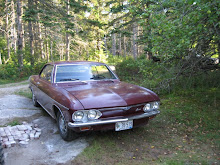How interesting it's been to read and listen to the reaction to the DOT study of "unintended acceleration" in the Toyota Prius.
Over the decades, the sense that the driver might be responsible for his or her actions with their cars has morphed into a belief that "the car made me do it." With more and more electronic control of cars, embedded in the software that controls more and more functions of a car, an attitude grew that the driver rarely made errors, but the controls took over in a maniacal manner.
It's possible that it might be accurate; software bugs and malfunctioning electronic components ruin the day of computer users routinely. But they usually give warning signs that we, as users, ignore routinely.
Classic car drivers confronting sticky throttles and loose linkages often; we learned to lubricate and check, and to push in the clutch, head for a safe place on the road, and turn off the engine. If you had an automatic, you shifted into neutral, grimaced as the engine screamed at high rpm, and then turned off the car.
You took a deep breath and let your heart rate slow down on its own. Then you looked to fix the problem.
In recent years the response has been to freeze in panic, pick up the pieces and then call a lawyer. The DOT study on this most publicized of problems refutes the contention of runaway cars and asks the driver to focus on, well, driving.
Wednesday, February 9, 2011
Subscribe to:
Comments (Atom)







